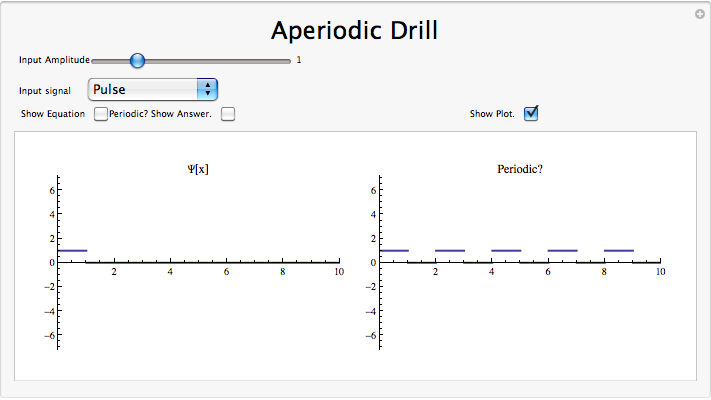8.1: Continuous Time Aperiodic Signals
- Page ID
- 22886
Introduction
This module describes the type of signals acted on by the Continuous Time Fourier Transform.
Relevant Spaces
The Continuous-Time Fourier Transform maps infinite-length (a-periodic), continuous-time signals in \(L^2\) to infinite-length, discrete-frequency signals in \(l^2\).

Periodic and Aperiodic Signals
When a function repeats itself exactly after some given period, or cycle, we say it's periodic. A periodic function can be mathematically defined as:
\[f(t)=f(t+m T) \quad m \in \mathbb{Z} \label{8.1} \]
where \(T>0\) represents the fundamental period of the signal, which is the smallest positive value of T for the signal to repeat. Because of this, you may also see a signal referred to as a T-periodic signal. Any function that satisfies this equation is said to be periodic with period T.
An aperiodic CT function \(f(t)\) does not repeat for any \(T \in \mathbb{R}\); i.e. there exists no \(T\) such that Equation \ref{8.1} holds.
Suppose we have such an aperiodic function \(f(t)\). We can construct a periodic extension of \(f(t)\) called \(f_{T_o}(t)\), where \(f(t)\) is repeated every \(T_0\) seconds. If we take the limit as \(T_0 \rightarrow \infty\), we obtain a precise model of an aperiodic signal for which all rules that govern periodic signals can be applied, including Fourier Analysis (with an important modification). For more detail on this distinction, see the module on the Continuous Time Fourier Transform.
Aperiodic Signal Demonstration

Conclusion
Any aperiodic signal can be defined by an infinite sum of periodic functions, a useful definition that makes it possible to use Fourier Analysis on it by assuming all frequencies are present in the signal.


